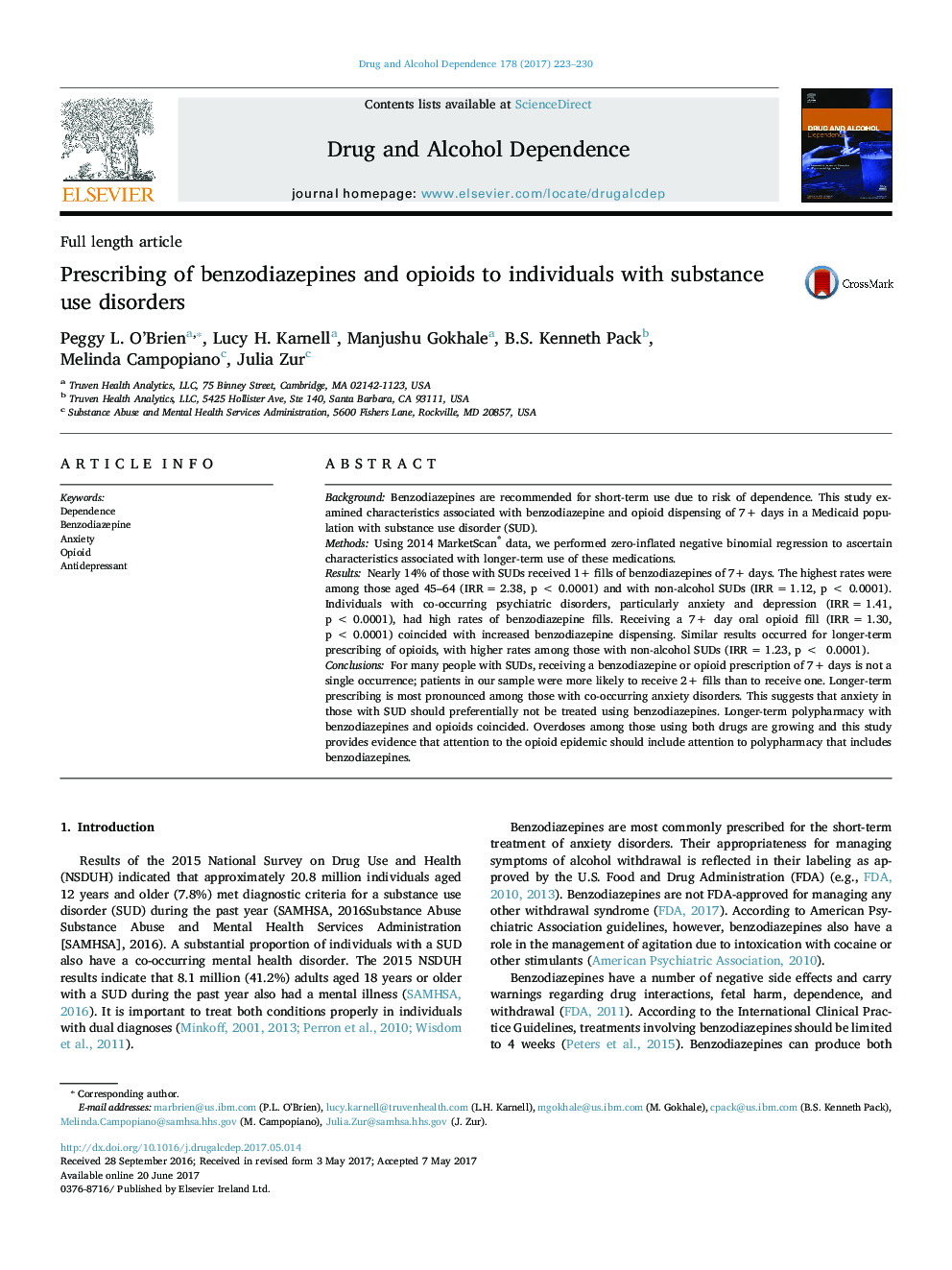| کد مقاله | کد نشریه | سال انتشار | مقاله انگلیسی | نسخه تمام متن |
|---|---|---|---|---|
| 5120353 | 1486113 | 2017 | 8 صفحه PDF | دانلود رایگان |
- Many substance use disorder (SUD) patients receive benzodiazepine fills over a long period.
- Co-occurring SUD and pain are associated with high rates of benzodiazepine fills.
- Concomitant benzodiazepine and opioid dispensing are common in those with SUDs.
- Females and whites are most likely to receive 5 plus benzodiazepine fills >7Â days.
- Benzodiazepine prescribers should seek out potentially dangerous polypharmacy.
BackgroundBenzodiazepines are recommended for short-term use due to risk of dependence. This study examined characteristics associated with benzodiazepine and opioid dispensing of 7+ days in a Medicaid population with substance use disorder (SUD).MethodsUsing 2014 MarketScan® data, we performed zero-inflated negative binomial regression to ascertain characteristics associated with longer-term use of these medications.ResultsNearly 14% of those with SUDs received 1+ fills of benzodiazepines of 7+ days. The highest rates were among those aged 45-64 (IRR = 2.38, p < 0.0001) and with non-alcohol SUDs (IRR = 1.12, p < 0.0001). Individuals with co-occurring psychiatric disorders, particularly anxiety and depression (IRR = 1.41, p < 0.0001), had high rates of benzodiazepine fills. Receiving a 7+ day oral opioid fill (IRR = 1.30, p < 0.0001) coincided with increased benzodiazepine dispensing. Similar results occurred for longer-term prescribing of opioids, with higher rates among those with non-alcohol SUDs (IRR = 1.23, p < 0.0001).ConclusionsFor many people with SUDs, receiving a benzodiazepine or opioid prescription of 7+ days is not a single occurrence; patients in our sample were more likely to receive 2+ fills than to receive one. Longer-term prescribing is most pronounced among those with co-occurring anxiety disorders. This suggests that anxiety in those with SUD should preferentially not be treated using benzodiazepines. Longer-term polypharmacy with benzodiazepines and opioids coincided. Overdoses among those using both drugs are growing and this study provides evidence that attention to the opioid epidemic should include attention to polypharmacy that includes benzodiazepines.
Journal: Drug and Alcohol Dependence - Volume 178, 1 September 2017, Pages 223-230
